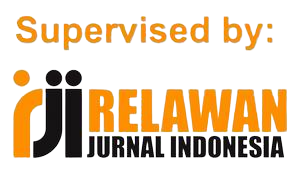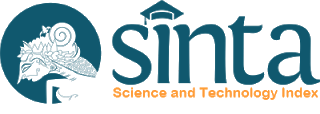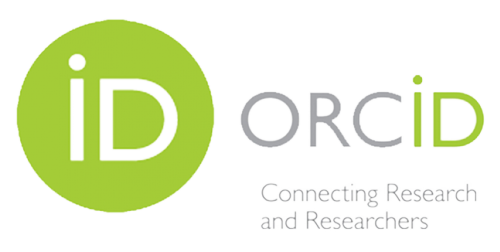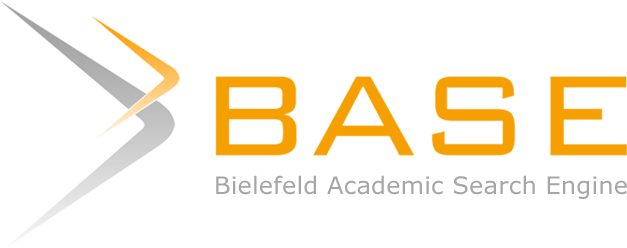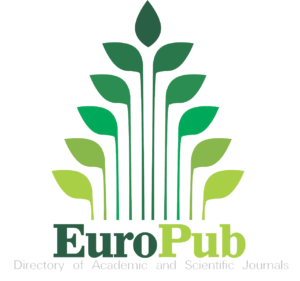Analisis Risiko Penyebaran Covid-19 Melalui Fasilitas dan Kegiatan di Universitas Sahid Menggunakan Metode HIRADC
Abstract
Keywords
Full Text:
PDFReferences
Anand, S., Montez-Rath, M., Han, J., Bozeman, J., Kerschmann, R., Beyer, P., ... & Chertow, G. M. (2020). Prevalence of SARS-CoV-2 antibodies in a large nationwide sample of patients on dialysis in the USA: a cross-sectional study. The Lancet, 396(10259), 1335-1344. http://dx.doi.org/10.1016/S0140-6736(20)32006-7
AS/NZS. (2004). Standar AS/NZS Nomor 4360 Tahun 2004 Tentang Risk Management. New Zealand: Standart Australia.
Fardiah, L. N., Santoso, B., Ahmad, H. F., Mauladiansyah, F., Baihaqi, G., Islam, Z. Z., & Salafudin, S. (2020). Analisis Bahaya Dengan Metode Hazard Identification, Risk
Assessment and Risk Control (HIRARC) Di Lingkungan Sekolah Dalam Upaya Pencegahan Penyebaran Dan Penularan COVID-19. Jati Unik, 4(1). 40-51 http://dx.doi.org/10.30737/jatiunik.v4i1.959.g1156
Garpenfeldt, K. (2019). Hazard Identification and Risk Assessment: Analysis of a Risk Assessment Process in Emergency Preparedness, (Disertasi). University of Gävle
Irianto, D., Basriman, I., & Sukwika, T. (2022). Pengembangan Model Metode HIRADC dalam Analisis Risiko Bekerja di Ketinggian Pada Proyek Konstruksi PT. X di Jabodetabek. Journal of Industrial Hygiene and Occupational Health, 7(1), 53-68. http://dx.doi.org/10.21111/jihoh.v7i1.8114
Jannah, M. R., Unas, S. E., & Hasyim, M. H. (2017). Analisis Risiko Keselamatan dan Kesehatan Kerja (K3) melalui Pendekatan HIRADC dan Metode Job Safety Analysis pada Studi Kasus Proyek X di Jakarta. Dissrtasi, Malang: Universitas Brawijaya.
Kemendikbud. (2020). Keputusan Menteri Nomor 36962/MPK.A/HK/2020 Tentang Pembelajaran Secara Daring dan Bekerja dari Rumah Dalam Rangka Pencegahan Penyebaran Corona Virus Diseasse (COVID-19). Jakarta: Kementrian Pendidikan dan Kebudayaan RI.
Kemenkes. (2021). Peta Sebaran COVID-19 Republik Indonesia. Jakarta: Satuan Tugas Penanganan COVID-19 Kemenkes RI.
Laksana, V. E., Kosasih, W., & Doaly, O. C. (2018). Analisis Potensi Bahaya Menggunakan Metode HIRADC sebagai Upaya Pencegahan Kecelakaan Kerja (Studi Kasus: PT. Supreme cable Manufacturing & Commerce). Untar, 1(1), 251-257
Lazuardi, M. R., Sukwika, T., & Kholil, K. (2022). Analisis Manajemen Risiko Keselamatan dan Kesehatan Kerja Menggunakan Metode HIRADC pada Departemen Assembly Listrik. Journal of Applied Management Research, 2(1), 11-20. https://doi.org/10.36441/jamr.v2i1.811
Masjuli, Taufani, A., & Kasim, A. A. (2019). Sistem Manajemen Keselamatan dan Kesehatan Kerja Berbasis SNI ISO 4500:2018. Tangerang Selatan: Badan Standarisasi Nasional.
Republik Indonesia. (2021). Keputusan Gubernur Daerah Khusus Ibukota Jakarta Nomor 875 Tahun 2021 tentang Protokol Pencegahan Dan Pengendalian COVID-19 di Perkantoran/Tempat Kerja Milik Swasta, Badan Usaha Milik Negara Atau Badan Usaha Milik Daerah. Jakarta: Sekretariat Negara RI.
Sasongko, W. H., & Sukwika, T. (2021). Penerapan Business Continuity Management pada Masa Pandemi Covid-19 di PT Brantas Abipraya. Distribusi-Journal of Management and Business, 9(2), 193-206. https://doi.org/10.29303/distribusi.v9i2.170
Sukwika, T., & Pranata, H. D. (2022). Analisis Keselamatan dan Kesehatan Kerja Bidang Freight Forwader Menggunakan Metode HIRADC. Jurnal Teknik, 20(1), 1-13. https://doi.org/10.37031/jt.v20i1.182
Tarwaka. (2012). Dasar-Dasar Keselamatan Kerja Serta Pencegahan Kecelakaan di Tempat Kerja. Surakarta: Harapan Press.
DOI: https://doi.org/10.36441/jamr.v2i2.1380
Article Metrics
Abstract views : 425 times
PDF views : 381 times
Dimension Citation Metrics
Refbacks
- There are currently no refbacks.
Copyright (c) 2022 Siti Azahra I. Atmariyani
Article Metrics
Abstract views : 425 timesPDF views : 381 times
Dimension Citation Metrics
Refbacks
- There are currently no refbacks.
Copyright (c) 2022 Siti Azahra I. Atmariyani
Refbacks
- There are currently no refbacks.
Copyright (c) 2022 Siti Azahra I. Atmariyani
Indexing and Abstracting
Journal of Applied Management Research is indexed and abstracted in the following databases:
Cataloging
JAMR is also available on several library catalogues:

Copyright ©2021 Journal of Applied Management Research (JAMR). This work is licensed under a Creative Commons Attribution-NonCommercial-ShareAlike 4.0 International License.


